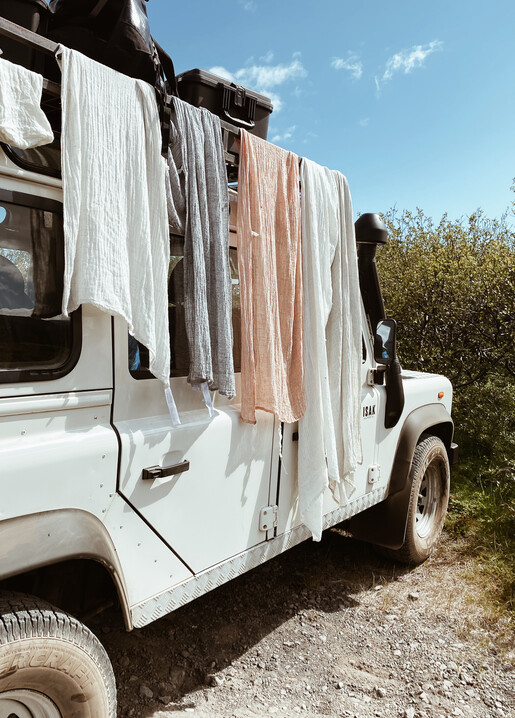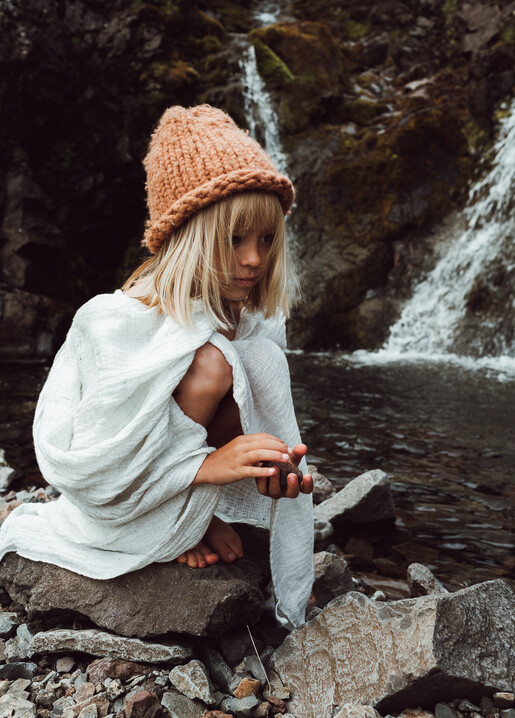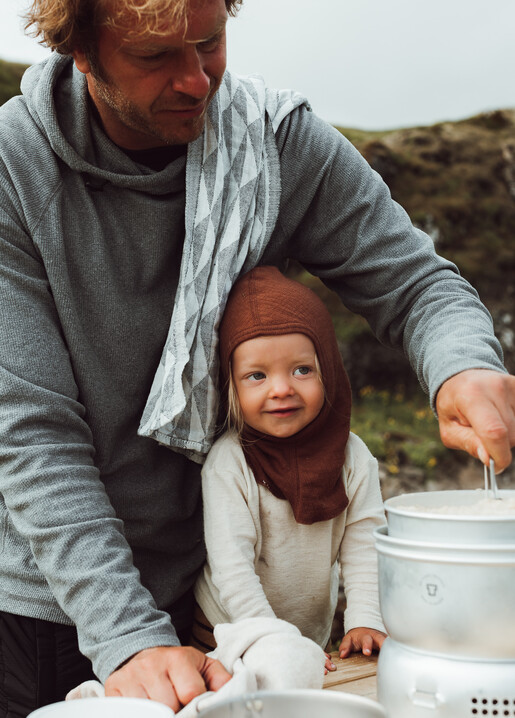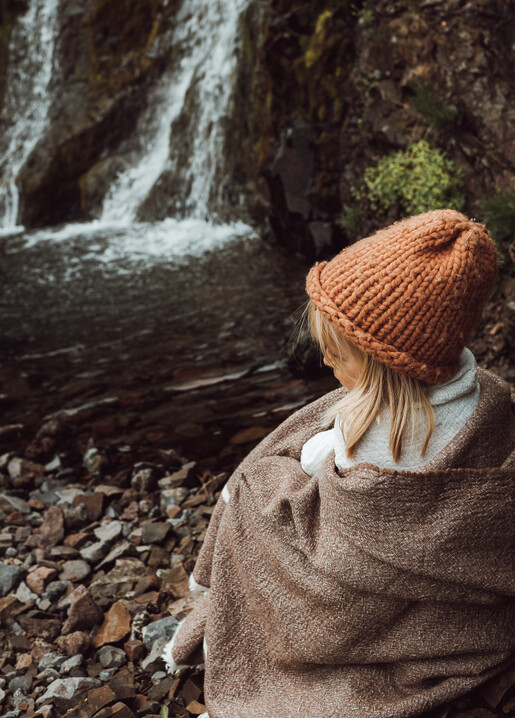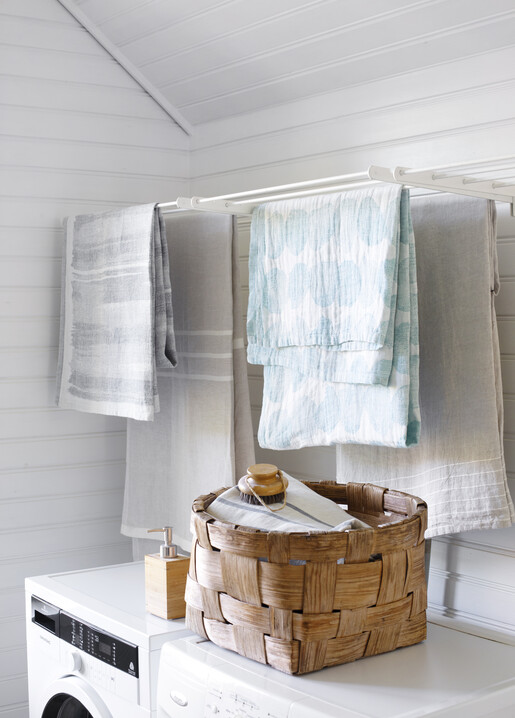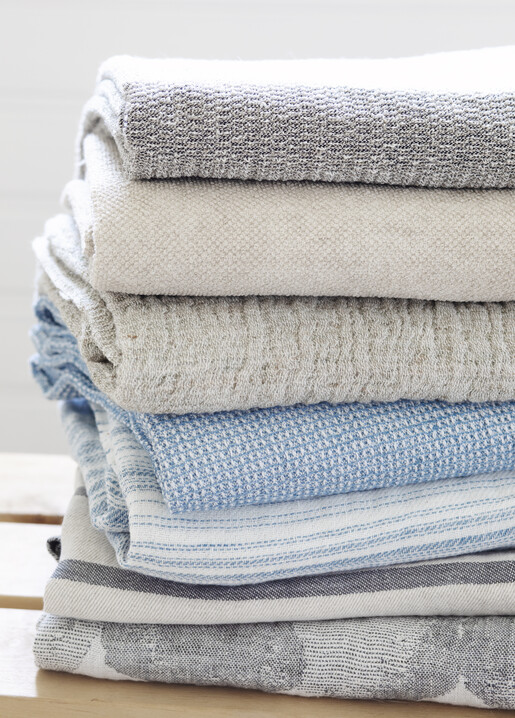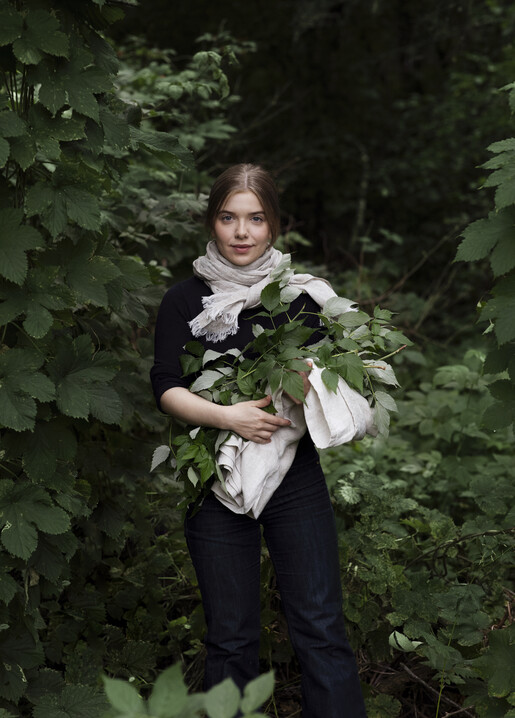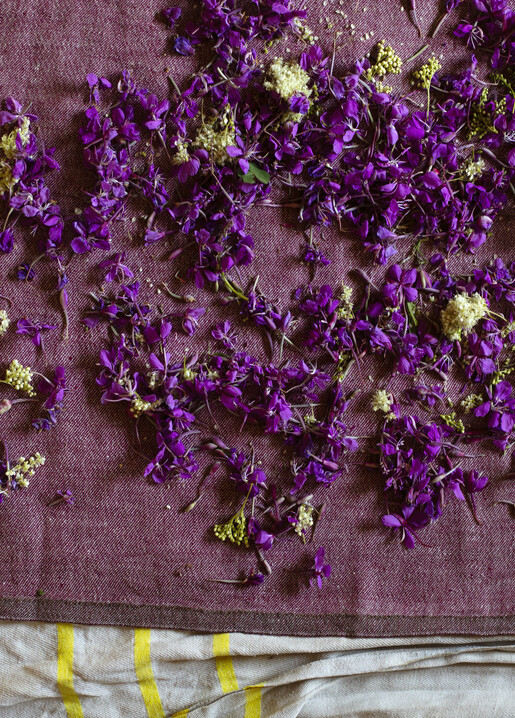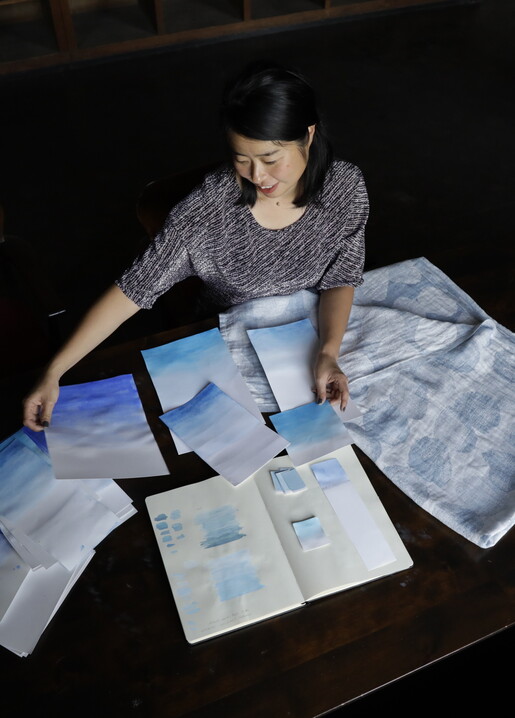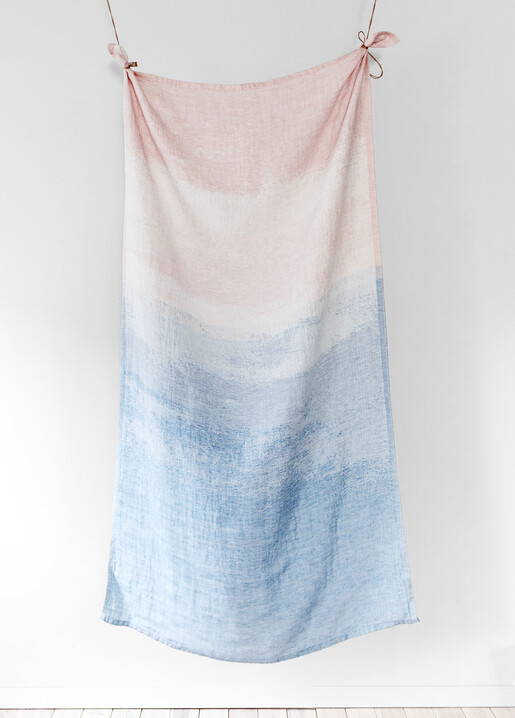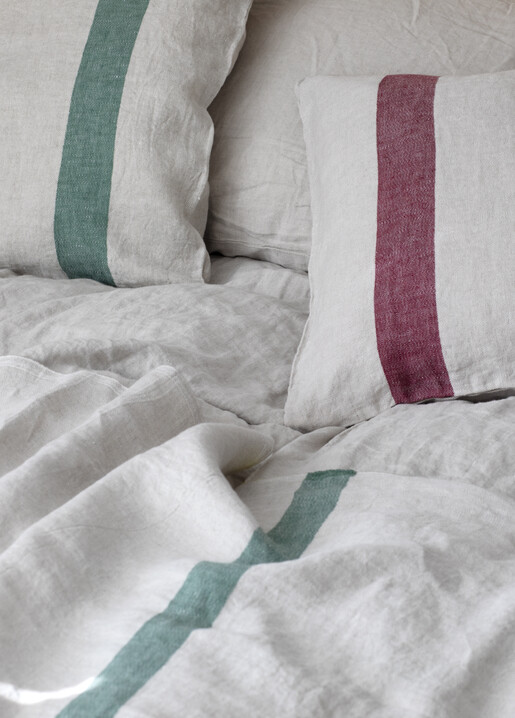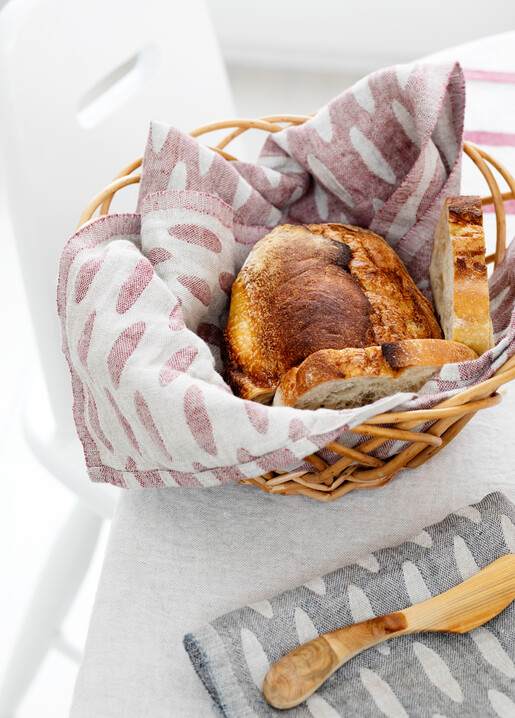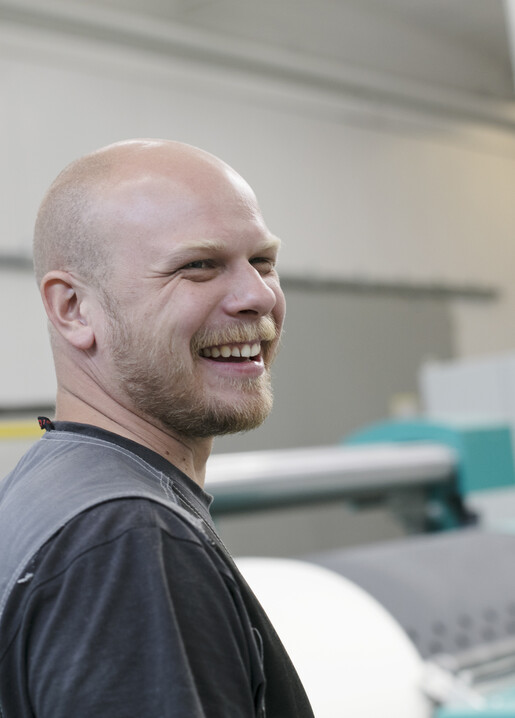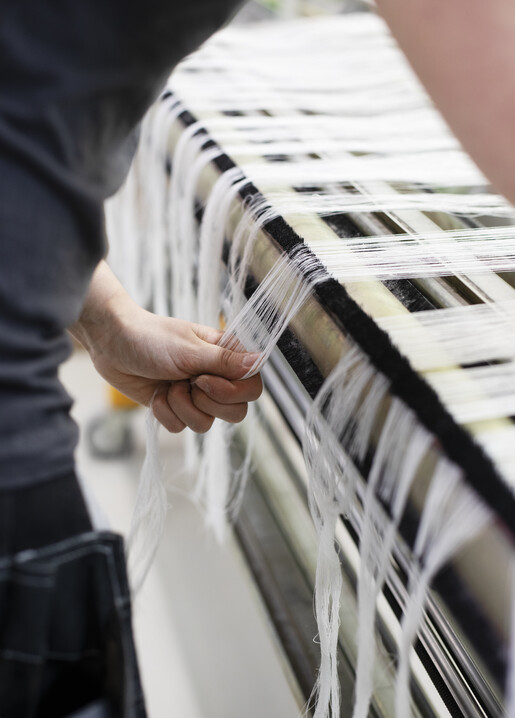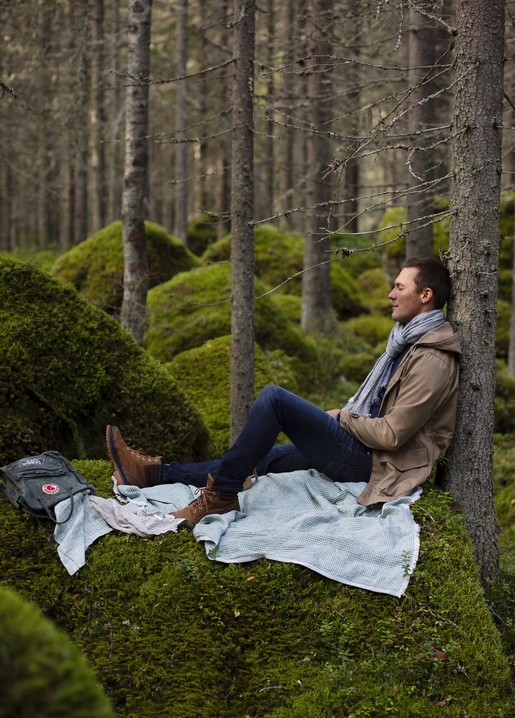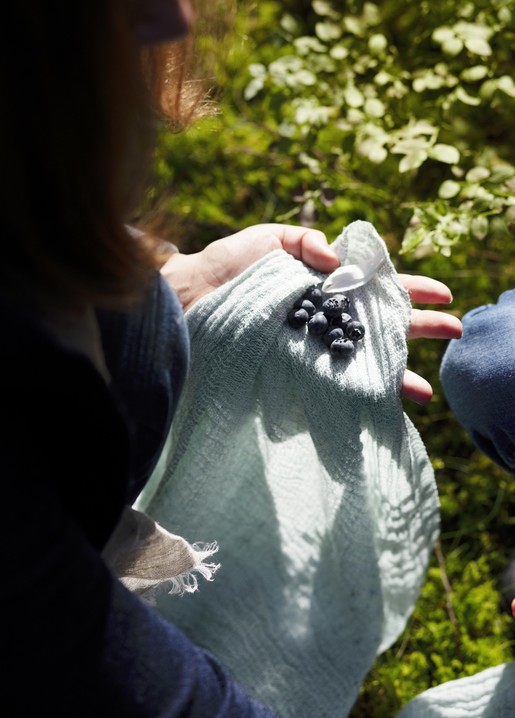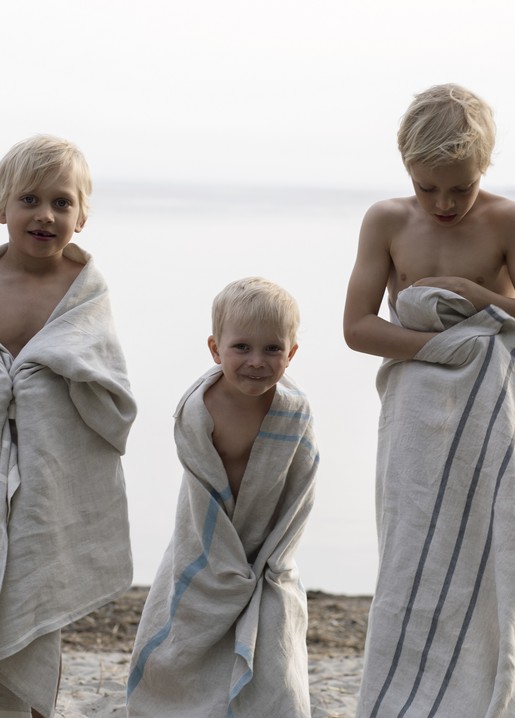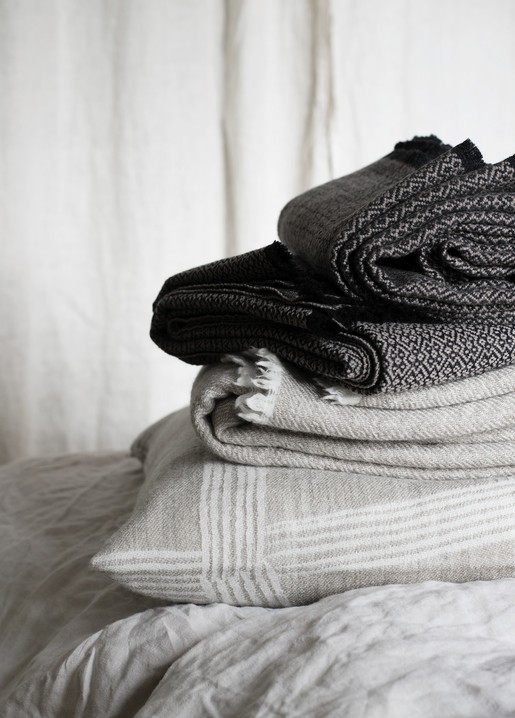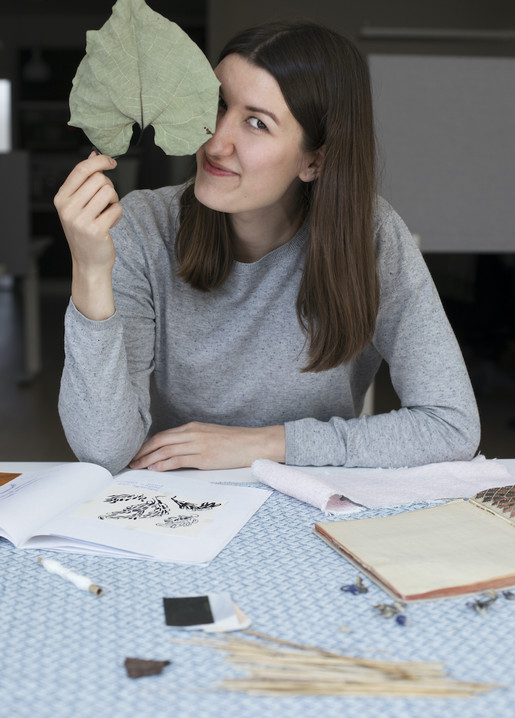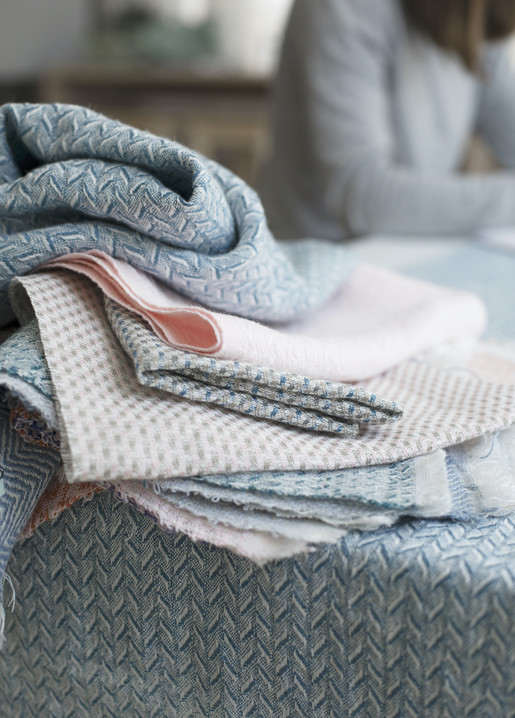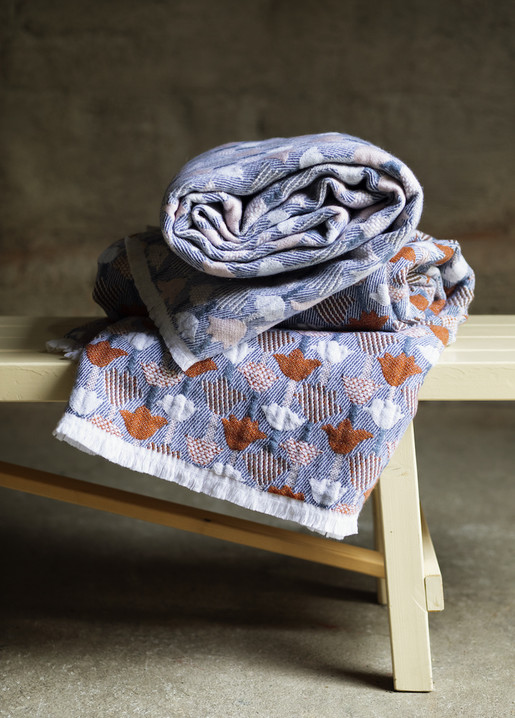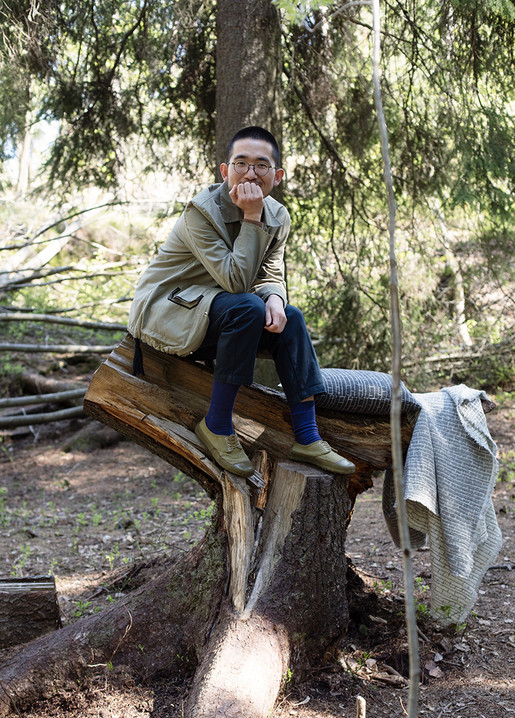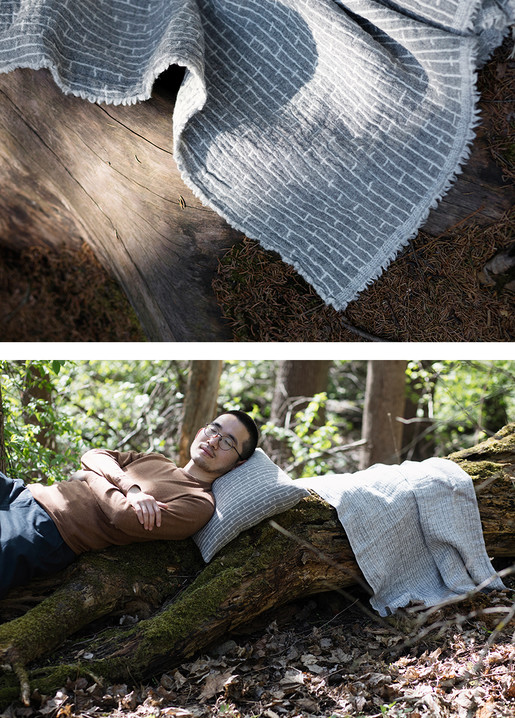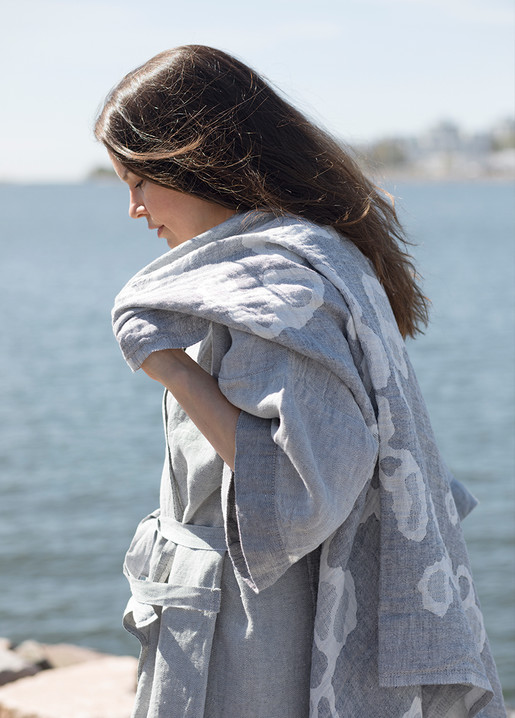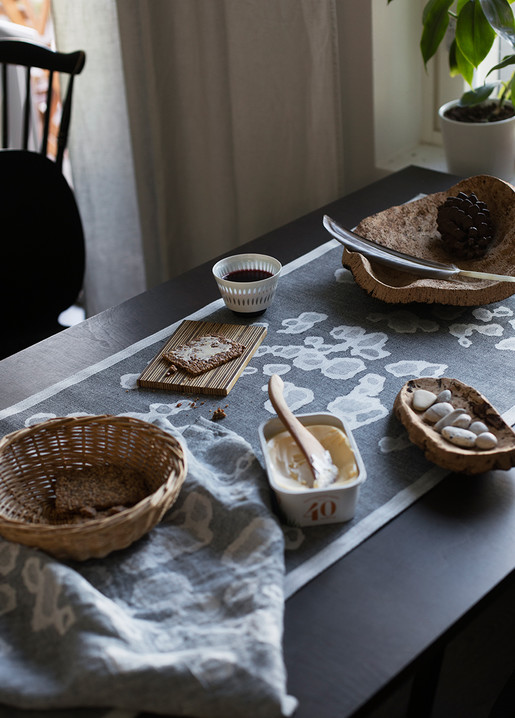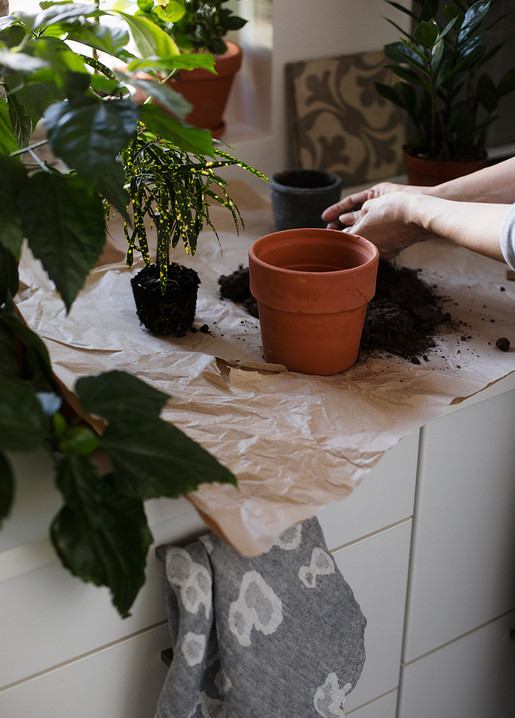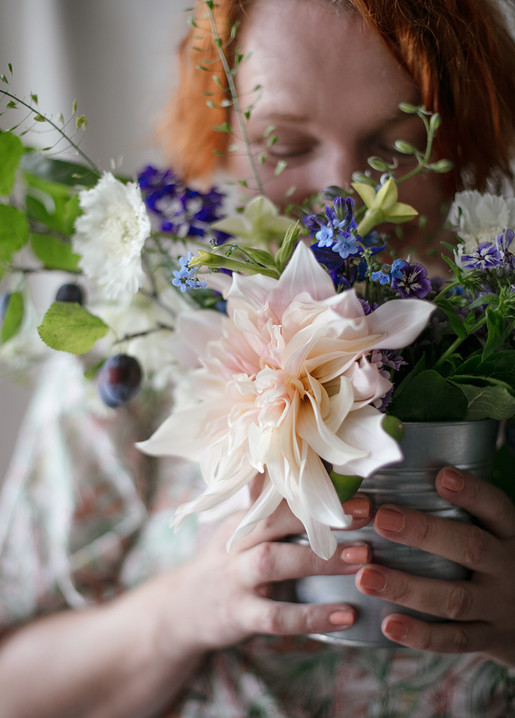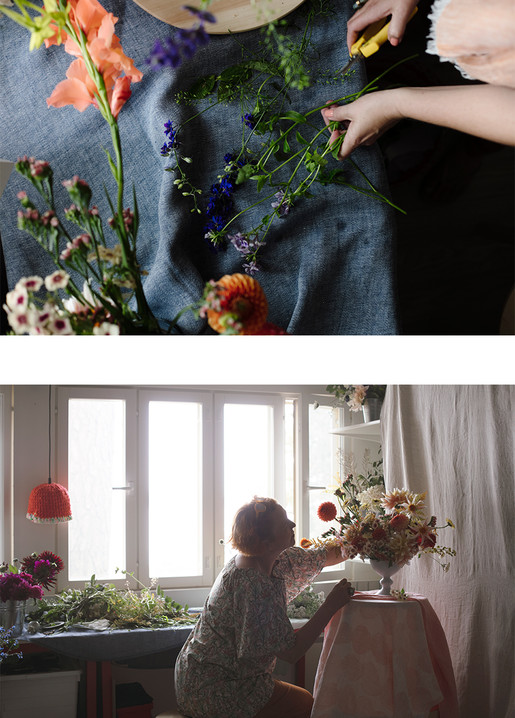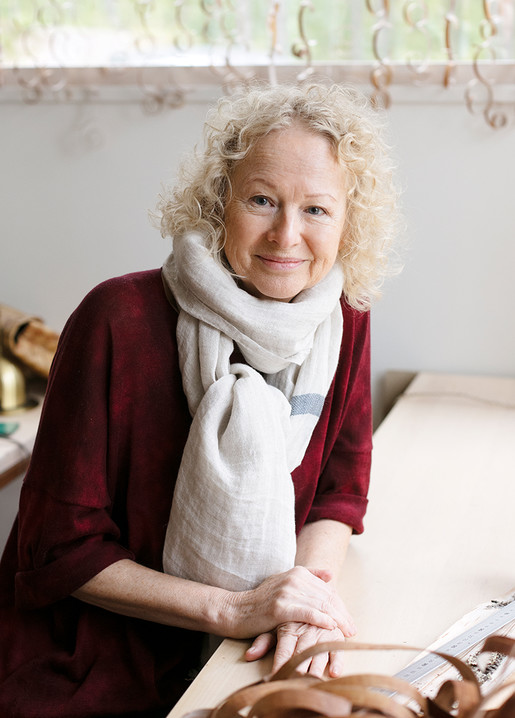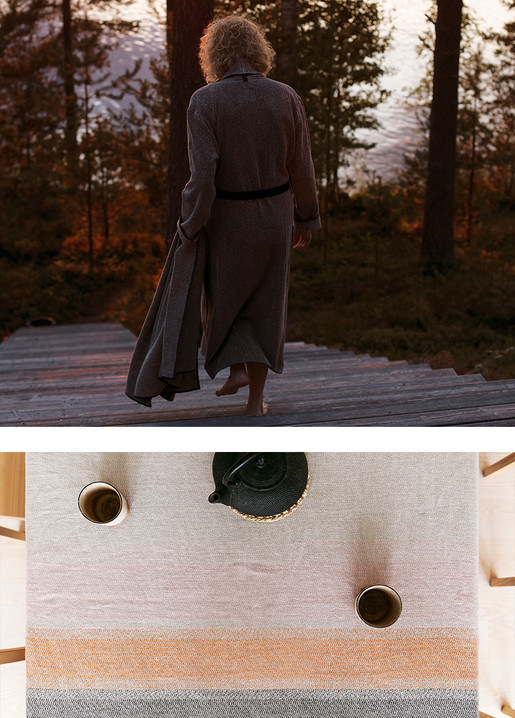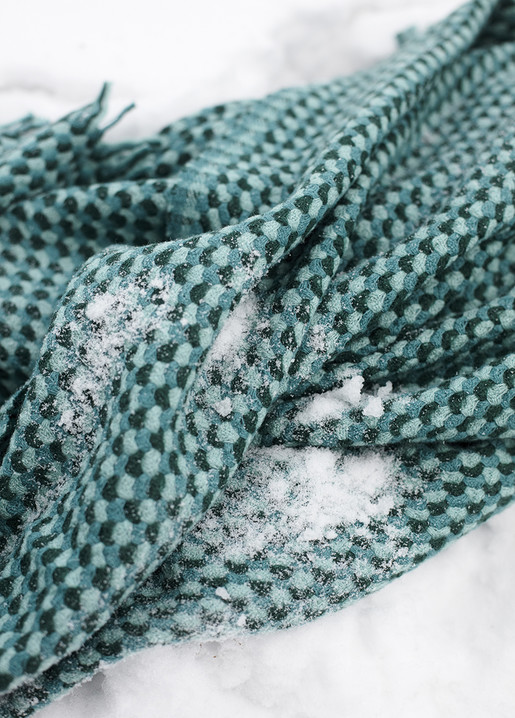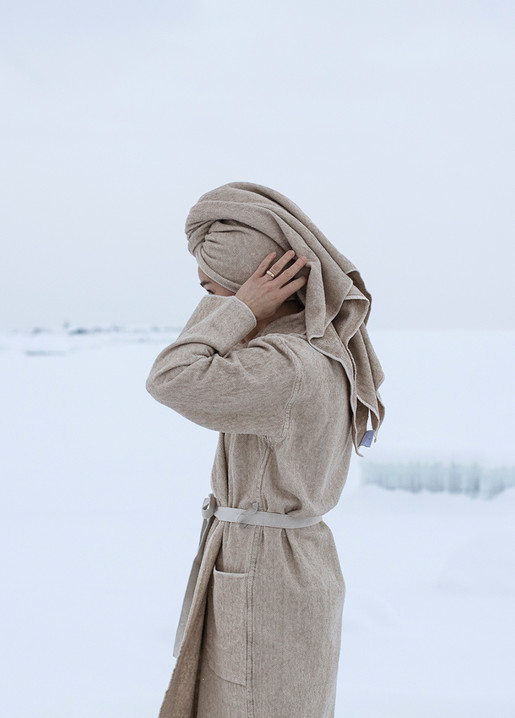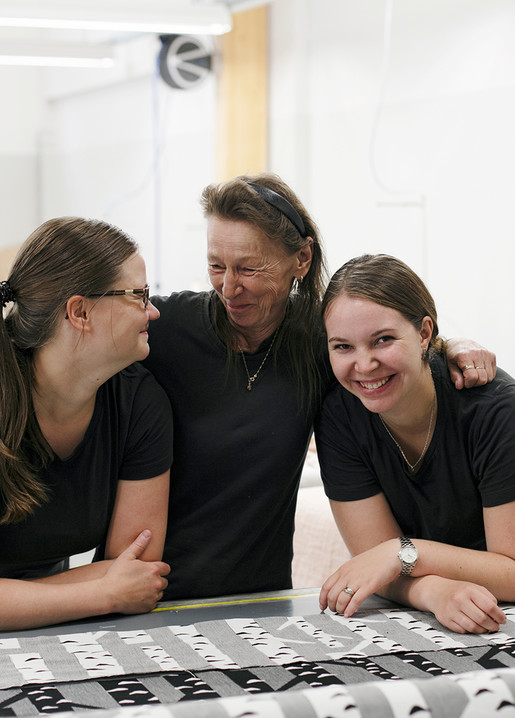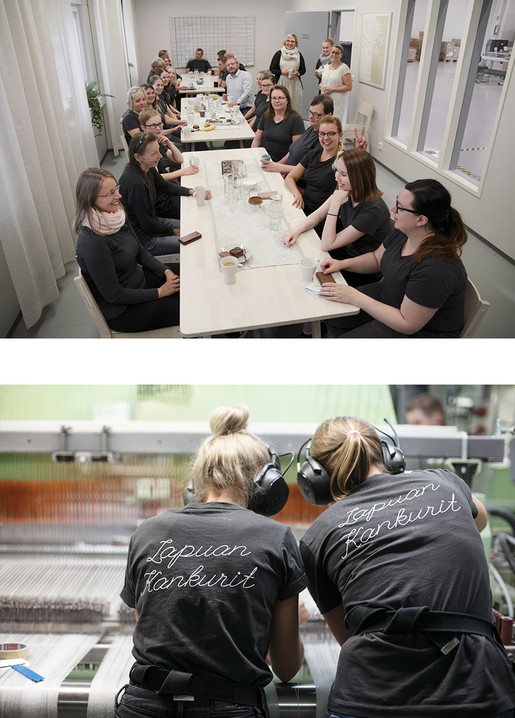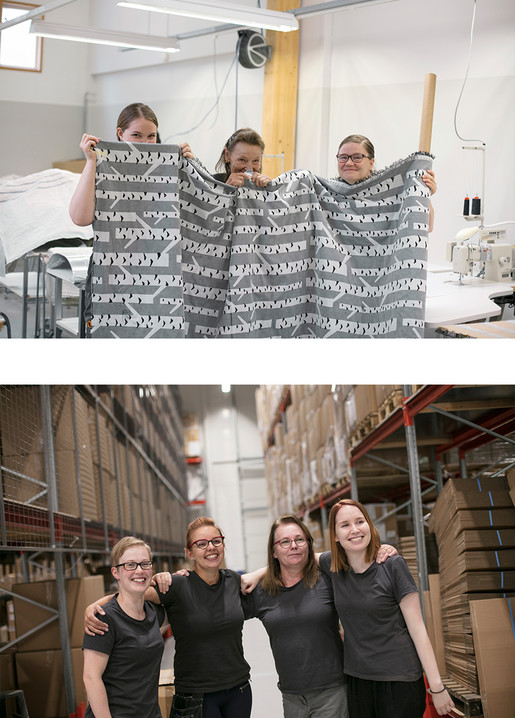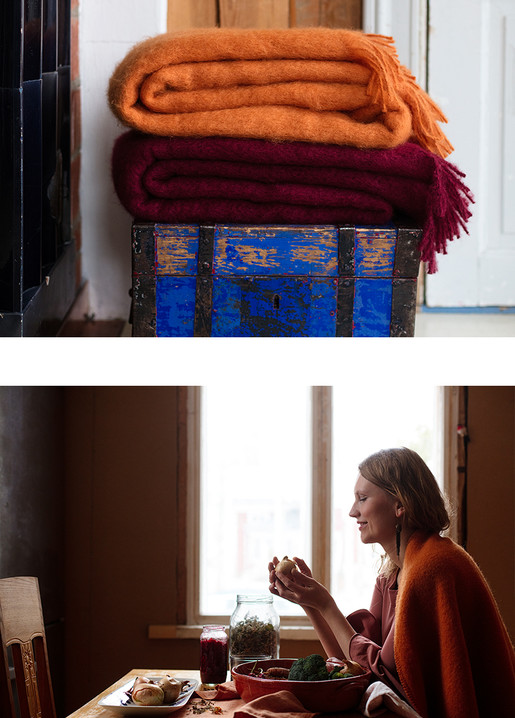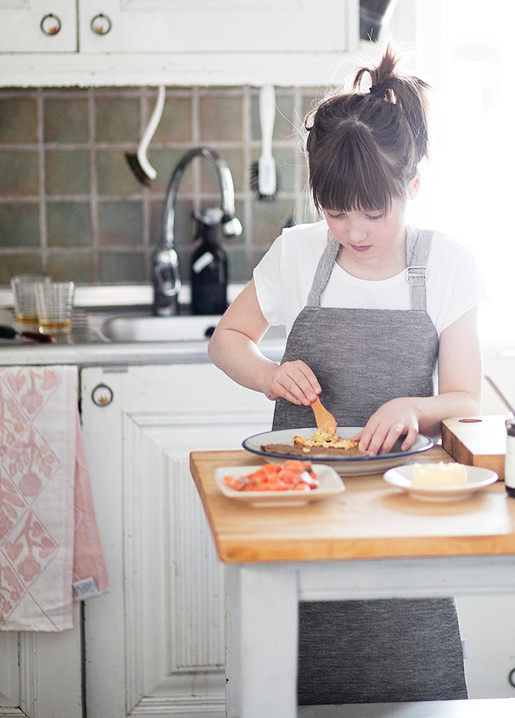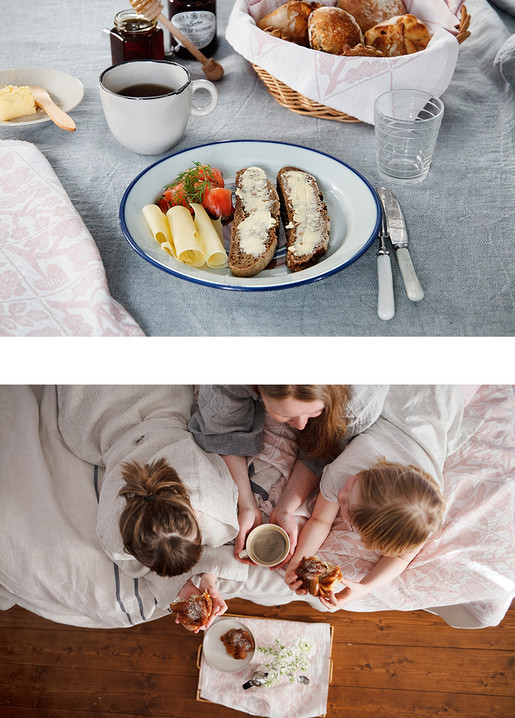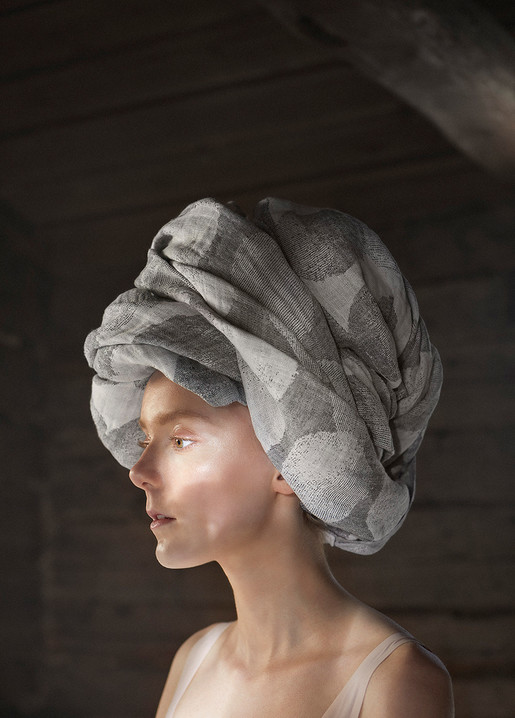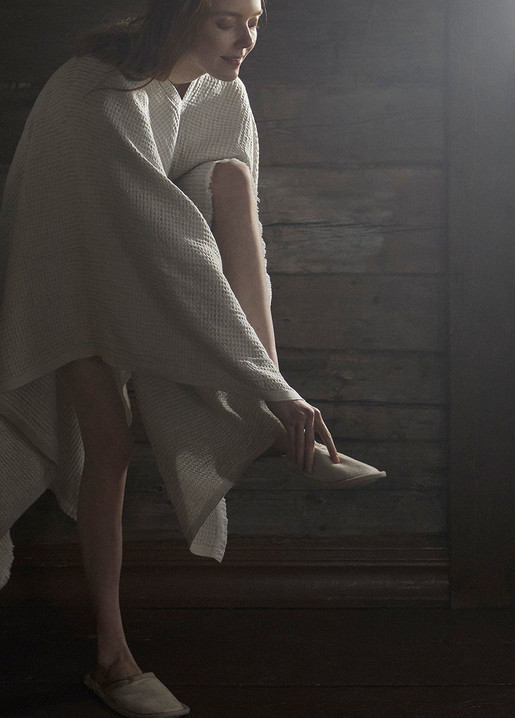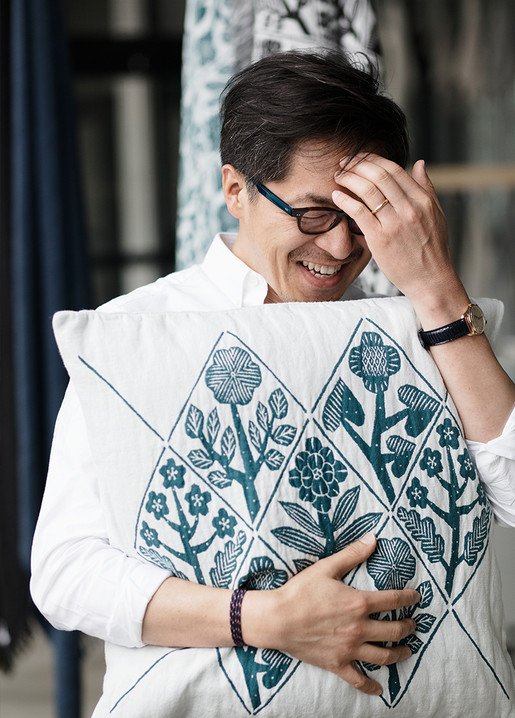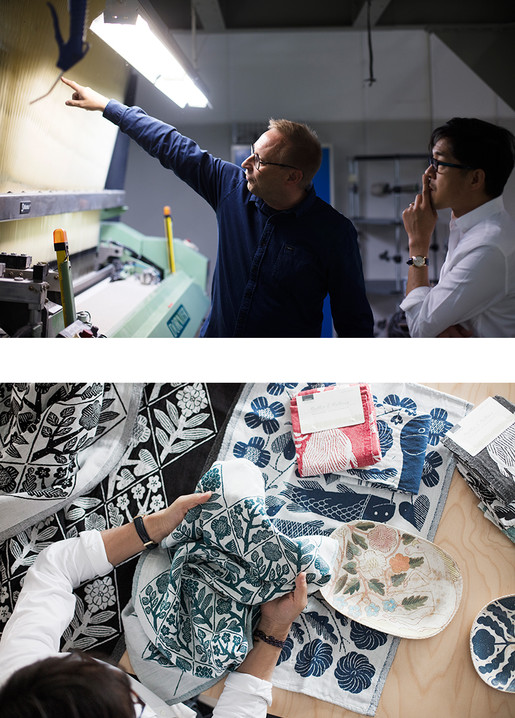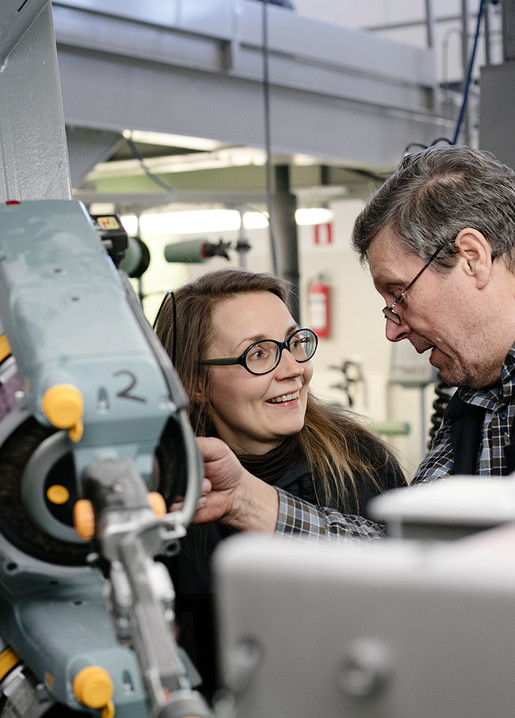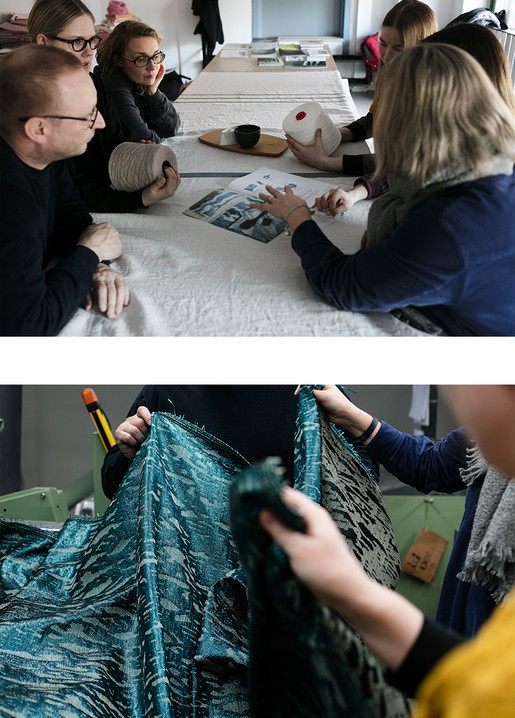Dreaming in Iceland
So we are a family of six, me Timo, my wife Jopsu, and our kids are Mimi 9, Muusa 7, Vili 5 and Iggy, who just turned 2. Our gang has always had a strong pull to be on the move. Luckily we’ve found work together in a field, which allows us to operate on the road. We run a creative studio Musuta Ltd. and work mostly in film and animation. Also we aren’t too afraid to stretch our comfort zone when it comes to planning where to go and what to do. This summer we decided to head to one of the rare covid-19 free places – Iceland. We packed our tents and other arctic camping gear into nearly bullet-proof cases and rented a big Land Rover Defender equipped to tackle the tricky mountain roads, river crossings, highlands and wastelands of Iceland. Off we were for a 6 week camping trip.
Taking a journey through the barren highlands is exactly like stepping into a lucid dream dropped off from the pages of a Haruki Murakami novel. People often say, that visiting Iceland is travelling to a different planet. I think a more fitting metaphor would be travelling to a different planet, all its moons, and then waking up in another solar system the next day.
What it does is, that it amplifies everything. Arctic climate is harsh to say the least, and it will slap one in the face, multiple times in a day to be precise. It might go from sweating in a T-shirt in the morning – while wrapping up the campsite – to 90km/h winds by afternoon, with wet snow flying horizontally in one’s face. It is no wonder that the old Norse myths and Viking sagas had so many gods for the elements. Storms appearing from nowhere can feel godly indeed, while the nature and vistas are nothing short of divine. Cooking for 6 can be a feat at home, so when camping, needless to say, even more so. A family of six also means a lot of dishes. And doing those dishes becomes quite a different chore in the middle of nowhere. Usually the facilities are far or sometimes nonexistent and hot water, even though abundant in hot springs, rarely finds its way into the taps over at the highland campsites.
Washing dishes in cold stormy winds and freezing tap water became a kind of a meditation itself. Instead of shunning away from the cold water, dipping hands into the water, paying very careful attention to that sensation. Strangely enough, it made the process very enjoyable. Somehow the cold exhausts itself and looses its grip. What really underscores this, is the feeling of grabbing a towel to dry the dishes and hands at the end. A linen tea towel has never felt so comforting and warm ever. If a Lapuan Kankurit towel feels luxurious at home, in the cold, in the middle of the highlands it feels out of this world. Even writing this paragraph makes my nerves feel the sensation of cold hands grabbing the linen to rub dry a titanium cup. It is surprising, which moments are the ones, that remind you that you are an actual living being.
No matter how well prepared and geared up, arctic nature will put anyone on their knees if it wants to. In our 6 weeks we experienced quite a few storms. The most memorable one was, when we had been out of coverage for a while and had missed the storm alerts through the local weather service. While the girls were enjoying a hot spring down the stream from our campsite, I was met with the ranger asking if we were absolutely sure that we are able to withstand the coming storm in our tents. 90km/h winds + gusts in scope I don’t even want to guess with heavy rain was approaching our mountain region. Judging from how serious the guy looked, a quick decision was made to take up on the offer to evacuate our family to one of their huts. And being Iceland, those red cottages were the cutest, sharp roofed elf dwellings sitting on a dreamy, grassy hillside. In a matter of two hours everything had gone from serene cloudy summer afternoon to a full blow storm reminiscent of Thor having a very bad day at Midgard. When taking down our tents the storm had already flattened both of them, even though they are made to withstand extreme conditions.
When driving across the river to get to our cottage, the wind had already become so severe that a grown man could barely stay on one’s feet while trying to dash over the grass to our hut. Everything was wet and battered, together with our gear we looked like a gang of Hobbits drawn out of a washing machine. The storm felt like it was about rip our cottage to pieces, luckily it didn’t. The next morning, catching Mimi, wrapped inside a Tanhu wool blanket with one of her Harry Potters is the perfect symbol for any storm – what will come, will also pass.
Iceland is a country of fire, ice and water – warm swimming pools and natural hotsprings – the latter, which can be nothing short of magical in the cold and harsh surroundings. But this time, braved forward by a friend of ours who is a keen ice swimmer, we started to take brazen swimming trips in the natural waters and lakes. It is difficult to describe that feeling of dipping into a natural pool under a waterfall running straight down from a glacier. Rebirth would be an understatement – dropping through the most translucent, turquoise liquid which feels so cold, that if it would stop flowing, it would freeze solid there and then.
I have to say, that our kids truly embraced Iceland as one giant, natural playground. Still it was hard to believe one’s eyes, when our then 6 year old daughter Muusa was the first of us to take a dip. We were so happy for having found Nyyti towels. Even for 6 people – two bigger ones for adults and four smaller ones for the kids, our towels didn’t take up much space, dried fast for camping and were light enough to carry up and down dormant volcanoes for crater lake swimming trips, needless to say how luscious those were. Merely the contrast of a soft towel against a harsh backdrop can bring a feeling of soft comfort. Packing for such a trip as ours, is always a compromise. But the few luxury items we were able to pack from Lapuan Kankurit were transformed into almost supernatural items in the Highlands. Folding an Icelandic sweater after a long day’s hike into a pillowcase can make a massive difference in how luxurious the night in a tent will feel – and trust me, nights below freezing can make one cast some serious hindsight over one’s summer plans.
It is hard to explain how trips like this, can be the most rewarding. Do you know how sometimes you might see a dream and the dream just sticks with you for years and years – some dreams even as far back as one’s childhood might seem so vivid and real decades after. A trip through Iceland will leave exactly that kind of an impression into the soul. I can still feel the cold rock atop a mountain under me and hear the rumble of a melting glacier wrapped in a blanket of fog. It feels like sitting in conversation with the sky, while taking a breath at the very last edge of the world.
Text & Photo Jopsu & Timo Ramu / Musuta
Love for linen
Absorbent, fast-drying, durable and ecological. There are many good reasons to choose linen towels from Lapuan Kankurit.
Creating the best linen towels in the world has been our goal since the very beginning of Lapuan Kankurit. To us, being the best means not only the highest quality, longevity, and design of our products, but also the transparency and sustainability of our production line. All our linen towels are made of ecological, certified natural materials, and woven in our weaving mill in Lapua, Finland.
This is why we can proudly say that our linen towels are the best in the world.
Lapuan Kankurit towel guide
Our collection is full of beautiful towels and choosing the right one can be tricky. To help you out, we have created this short guide to our Lapuan Kankurit bath towels.
Our products are mainly made from linen and tencel. There are seven different types of material blends, creating different kind of textures and qualities. Sizes also differ from handy travel sized towels to large bath sheets.
MERI a member of our linen terry product family is like Finnish love: coarse at first sight, but softens in use and lasts for a lifetime. Meri is made of 70% linen and 30% cotton.
KIVI is a modern version of traditional linen terry. Made of washed linen-cotton, Kivi is your choice if you are looking for a soft and luxurious plush bath towel.
NYYTTI our lightweight washed linen-tencel towel, feels like a summer breeze on your skin. Nyytti is woven with a loose, open weave, resulting in a muslin-like, super soft towel. Nyytti is perfect for travelling.
TERVA our own material innovation, is made of an absorbent linen-tencel blend. The Terva towel is one of our most popular and colourful products: it comes in array of 25 beautiful colours and three different sizes.
ULAPPA is made of heavyweight, luxurious 100% washed linen. Ulappa’s biggest size is big enough to wrap all around you.
USVA an elegant Lapuan Kankurit classic, is your choice if you love traditional, timeless design. Multi-use Usva is made of 100% washed linen.
SADE a double woven 100% washed linen towel, is highly absorbent and durable. The more you use Sade, the softer and better it becomes.
Wild about greens
In summer, Finnish nature is filled with hundreds of edible plants, flowers, and herbs. Wild greens are rich in vitamins, minerals and antioxidants, and have been used for centuries as food, and to promote wellbeing.
Picking and using wild herbs has become more popular than ever. This kind of wild green foraging, or hortoilu in Finnish, is a fun way to spend a day outdoors. Learning to identify wild plants gives us a new perspective on nature and its possibilities.
An easy way of getting started on wild green foraging is making your own herbal tea.
Many plants can be used as tea, with varying tastes and colours. Fermentation is a traditional microbial process used in tea manufacturing to improve the taste and remove bitterness. Fermenting hand-picked natural herbs creates unique, delicate flavours and improves the quality of the tea.
Making your own herbal tea is easy. Use safe herbs, such as raspberry, chamomile, or blackcurrant, and remember to consume in moderation. Make sure that you have identified the plant correctly before harvesting.
1. After picking the herbs, let them wilt for a couple of hours.
2. Take a handful of herbs and roll them gently between your palms. It is important to break the cellular structure of the leaves to ensure fermentation.
3. Place bunches of leaves tightly in a glass jar and close the lid loosely. Place the jar in a warm place and let it ferment for 48 hours, or even longer according to your preferences. During the fermentation process the leaves will start to smell sweet and turn brownish in colour.
4. Spread the fermented herbs over a linen towel and leave them to air-dry until they are crisp.
5. Enjoy! Your home-made herbal tea is ready to brew.
Horizon views
Harakka island is a place of culture and nature just offshore Kaivopuisto in southern Helsinki. A former chemical laboratory, the main building of the island has been colonised since 1988 by artists and artisans who have occupied studio spaces with a myriad of different practices and creative processes. Our designer Aoi Yoshizawa is one of the artists animating this beautiful corner of Helsinki with her work.
Artists reach Harakka by rowing their own boats year-round, and even walk over the ice when it is safe enough during wintertime. “You can really feel the nature while commuting to and working in Harakka. The weather can often be very harsh out on the sea. When it is very windy and rainy, we just get wet.” Working on this island makes Aoi feel one with nature.
Although a native of Tokyo, Japan, Aoi has grown to love Finnish nature: “It is important to observe nature – to find beautiful colour compositions and textures.” The new design SAARI is inspired by horizon views she observes from the island: “My favourite place in Harakka is the seashore where you can see the long horizon towards the south. I just love to stare at the horizon, exploring the texture of the waves and feeling the fresh air. Being outside on the island is the best way of looking for ideas for design and artworks.” She finds the Finnish seascape very dreamlike and fascinating.
Her design SADE is inspired by fresh air and the scents that appear after a rainstorm. “After the rain, the smell of the soil, grass and wood becomes more intense. It feels very fresh, and I felt an urge to express that moment on textiles.” she explains. From her initial watercolour-painted design, Lapuan Kankurit produces the woven towels. “I appreciate Lapuan Kankurit’s deep knowledge in weaving. They can create very complex effects of my watercolour design with detailed woven structures.” Being a passionate and experienced weaver, Aoi’s understating of textile techniques is also important in turning the initial artistic inspiration into a textile design.
Besides the wilderness on the island, Aoi enjoys the artists’ community. “It is always refreshing to talk to my colleagues at the artist house, who work in different fields.” The collective creativity also drives her artistic practice, as she often collaborates with other artists.
Text Aoi Yoshizawa Photo Lotta Djupsund
Designs for a lifetime
We believe that good design is all about making the right decisions.
This is why we have chosen to make timeless, environmentally friendly designs from high-quality and certified natural materials, in our own weaving mill in Lapua, Finland. Our talented designers help us choose the colour combinations, weaves and yarns, resulting in harmonious design. The artisan professionals in our weaving mill ensure that every product is a masterpiece of craftsmanship.
Thanks to these choices, every item we create is a classic that lasts a lifetime.
The most important choice still remains – the one made by you, our dear customer, partner and friend. Choosing us means that you have chosen not only a beautiful design, but also a sustainable future. Thank you for making good decisions with us!
Weavers of Good Life
The weaving mill of Lapuan Kankurit in Lapua, Finland is filled with the enchanting rhythm of weaving machines as thousands of yarns interlace, twisting, entwining, and turning into beautiful fabrics. Their family has been manufacturing on a jacquard loom in Lapua since the 1930s.
Today, Lapuan Kankurit is a family business owned by fourth generation weavers Esko and Jaana Hjelt. Lapuan Kankurit aims to develop the best textiles in the world by combining their weaving tradition with the latest innovations. “Weaving as a business is very challenging,” says Esko Hjelt. “You must have the knowledge of weaving as a traditional craftsmanship, but you also have to be able to modernize and develop weaving processes, and to bring innovation into textile craft.” To make this happen, Lapuan Kankurit has invested over 2.5 million euros in the development of their weaving manufacturing processes at the Lapua weaving mill. Old, mechanically controlled machines, that used a set of punched cards indicating the pattern, are now replaced by top of the line technology.
“Digitalization and modernization enable us to easier experiment with new techniques and materials, and of course to improve our processes,” Esko Hjelt says. “We use the best technology available to ensure that our products are of the highest quality.” Despite all the modern technology, Lapuan Kankurit hasn’t forgotten that it is people who run the machines. “Good design and our own production line are important, but equally important are our people. We wouldn’t get by without our devoted and skilled staff,” says Jaana Hjelt.
Lapuan Kankurit is a Masters of Linen certified mill. The label is granted to linen product manufacturers in Europe using linen yarn grown and spun in an eco-friendly manner – linen that is 100 percent traceable. Esko Hjelt emphasizes that Lapuan Kankurit commits to environmentally responsible practices on all levels. “To us, being a master of linen means mastering every detail of the industrial weaving process, making them sustainable and transparent. We think that it is our responsibility to lead by example and show that textiles can and should be manufactured responsibly.”
When being is enough
As Finland is the most heavily forested country in Europe, it’s no wonder that our myths and stories are saturated with forest spirits, elves and sacred animals. Our dense forests have given us food, remedies and a living for centuries–nature truly is the quintessence of Finland.
Thanks to our strong connection with nature, we Finns have always acknowledged the forest as a powerful entity. Now there is also strong scientific proof that spending time in a forest is good for your body and soul. Time spent in the forest reduces stress, lowers blood pressure, and stimulates your senses
Many of us are familiar with the most common outdoor activities, such as picking berries and mushrooms, camping or hiking, but there are also other ways of enjoying nature.
Forest bathing, metsäkylpy in Finnish or shinrin-yoku in Japanese, means immersing yourself in a forest. It’s a form of natural therapy where you experience your surroundings with all your senses: by touching, observing and breathing consciously. We Finns have always enjoyed the peace and quiet of the forest, but the actual method of forest bathing was first developed in Japan. With our mutual love of nature, it’s no wonder that forest bathing has become extremely popular in both countries.
Forest bathing practice consists of walking slowly through the woods, touching the trees and enjoying the sounds, colours and scents of nature. The most important thing is to slow down and create a connection with nature.
There are no rules for how long a forest bathing session should last. Even a couple of minutes can have a positive impact on our health. A twohour forest bath will definitely reduce stress levels and give you a sense of calm, peace and harmony.
Most people feel restored and refreshed after forest bathing. A slow, meditative walk gives us a chance to quiet our minds and truly concentrate. Feeling connected with nature is something that cannot be achieved via digital devices; it requires your actual presence in nature.
When slowing down and admiring the perfection in every natural detail, you have to agree that time spent amongst the trees is never wasted.
Text & Photo Katja Lösönen
Intelligent Nature
Authentic, natural materials are close to our heart at Lapuan Kankurit. We love weaving with linen and wool because of their unique qualities.
Linen is a truly ecological material. It grows with rainwater without irrigation, which saves groundwater and maintains a healthy ecosystem. We use European linen that is produced according to Öko-Tex standards. As part of Masters of Linen, all our linen products are 100% European.
The absorbent and breathable qualities of linen make it the perfect material specially for towels. It repels dirt and dries fast. Linen feels pleasant and cool to the touch, and it pampers your skin by improving circulation.
What makes linen especially beautiful is its durability: textiles soften with use and laundering. It’s also a sustainable choice, because linens can be passed down generations.
The wool we use is for example high-quality new wool from New Zealand and South Africa. Our wool is mainly spun in Europe according to Öko-Tex standards, and we ensure that our production is mulesing-free.
Wool is well-known for its good insulation properties, meaning that you will stay warm in the winter and cool in the summer. Wool has a coating that naturally repels water and makes the textiles antimicrobial. Wool is anti-static, as well as odour and stain resistant, so it doesn’t gather dust mites or require regular washing.
Wool is one of the most durable natural materials. Textiles can last for generations, but they are also suitable for recycling – an ecological and sustainable choice.
Text Aino Hyyryläinen
The Intuitive Weave
The daughter of a textile artist, and granddaughter of a skilled craftswoman, designer Helmi Liikanen grew up watching her mother and grandmother experimenting with different weaves, dyes and materials. The valuable tradition of textile craftmanship passed on to the next generation as she became a textile designer.
“One of my most precious items is my grandmother’s vividly illustrated notebook from 1941, where she documents her remarks on weaves and weaving techniques”, Helmi says. “The notebook also became an essential part of my master’s theses, where I focused on developing new woven structures on linen material by means of hand-weaving.”
Helmi started co-operating with Lapuan Kankurit when she was still studying at the MA programme for Fashion, Clothing and Textile Design at the Aalto University.
“I trust my intuition when it comes to design. When studying, we students were constantly encouraged to try new things and to experiment with materials,” Helmi says. “To me this kind of learning-by-doing method was the best way to understand what weaving is really about. I think that skills are best learned through practice.” Lapuan Kankurit shares this point of view. “We’ve been admiring her weaving skills since the very beginning,” says Esko Hjelt, CEO of Lapuan Kankurit. “She works wonders with weaves and materials. It’s easy for us to work with a designer who understands the reality of industrial jacquard weaving, and not only the design side of it.”
Weaving as an experience is something that Helmi feels strongly about. “To me hand-weaving is an overall physical experience. Through the hands-on connection with my tools and materials, I can intuitively transform my ideas into new woven structures. It’s both interpreting tradition and creating something new at the same time,” Helmi describes. “It was stunning to witness how Lapuan Kankurit actually manages to maintain that same weaving magic even though they operate on a much larger scale.”
Helmi’s designs for Lapuan Kankurit, LEHTI and TULPPAANI, are both part of her studies at Aalto University. LEHTI, leaf in English, is a delicate design based on traditional honeycomb weave. TULPPAANI, tulip, is a fun and more experimental combination of different weaves and warp densities. “Designing shouldn’t be taken too seriously,” Helmi laughs. “Tulppaani was born out of the joy of playing around with weaves and materials.” Helmi is specific when it comes to materials too. “To me it’s important to create designs that not only look but also feel good. Touch is one of our most powerful senses – the physical connection also matters in design.”
As a designer, Helmi is inspired by nature and emotions. “Designing and being in nature have many things in common. In both it’s important to experience, observe and enjoy what you’re doing,” Helmi says. “To me, it’s all about the feeling.”
Text and Photo Katja Lösönen
Spring 2020
Designs for a Simple Life
Designer Tong Ren finds inspiration from nature and his travels.
Before beginning his studies in Aalto University, Tong Ren worked with industrial design. He became familiar with the craft early in life: his sister is a designer and his father a traditional Chinese painter. "I used to play around in his studio", Tong describes, "I loved seeing him painting." While the artistic side is strongly influenced by his father, Tong also became fascinated with his sister's books on design. "I loved the designers' sketches. I got to know a lot about design from her."
Now Tong studies in the Master's programme in Fashion, Clothing and Textile Design. His studies also brought him and Lapuan Kankurit together in the spring of 2018, when he visited the weaving mill as part of his studies. Students weave their designs at the mill, and the company meets young designers. "We fell in love with Tong's style right away. After spending more time with him, we got to know him better and definitely wanted to showcase his talent in Finland even more", says Marketing Manager Jaana Hjelt. Tong's MATKA blanket was woven at the mill and later showcased in the Protoshop exhibition at design fair Habitare. "The workshops are amazing. They allow me to realise my designs into real prototypes", Tong says.
Tong finds inspiration in nature, and he often walks in Lammassaari in Helsinki. Even looking at the same tree can spark a different idea each time. "It's always important for me to think about how tiny I am compared with nature", he ponders. His pattern METSÄ echoes this interest in nature. "It is peaceful, but full of textures", Tong describes. The Lapuan Kankurit collection will include METSÄ as woollen blankets and pillows, as well as linen bath and sauna products.
Travel also inspires the young designer. "The diversity of cultures in the world is amazing", he says. On his latest trip to China, Tong visited traditional gardens and tea shops. Inspiration is everywhere, especially in craftsmanship. "I love visiting traditional markets that sell local crafts. I always get so much inspiration from the craftsmanship: the ceramics, the woven bamboo baskets, the traditional national costumes, and so on."
Tong appreciates the simple life in Finland and often begins his day by eating Finnish berries and dark bread. When he's not at work, he's often found swimming either in pools or lakes. "I love the Finnish summer cottage. Swimming in the lake after sauna is the best", he praises. He also finds that Finns are passionate about protecting nature. That's why he's thrilled to work with Lapuan Kankurit. "I love the way they respect nature and craftsmanship", he says. He often works with natural materials in his designs. "Sustainability is an important issue", Tong says. "It's important to know about the materials I'm using."
Text Aino Hyyryläinen Photo Katja Lösönen
Autumn 2019
Embracing Positive Materialism
When you care for your things, they care back, says Hanna Linkola.
"I wish people looked after their senses", says Hanna Linkola, concept designer for the Finnish Association for Nature Conservation (FANC). After transitioning from art director of a large department store to her current career, Hanna started realising how distant our culture sometimes is from nature. "I'm worried about the amount of plastic objects and dead surfaces in the world at the moment", she says. Places like online stores focus on how things look, but Hanna says that we should also understand how they feel when you touch and use them. Aesthetics and how things feel are essential to Hanna. She recognises materials through touch and often handwashes her textiles. Owning fewer items and taking better care of them helps us appreciate our things and the nature behind them. "I call it positive materialism", she says. To Hanna, that means respecting and understanding nature as a source of all materials and things. "I don't like the word 'consumer'. I'd rather see myself as a user. It's environmentally friendly to care for your things."
The relationship with nature is what draws Hanna to Lapuan Kankurit. She has admired them for decades for their aesthetics, sustainability, and transparency. "All elements align with them", she says. "Their textiles feel strong, natural, and trustworthy. Linen and wool are beautiful materials." One of FANC's aims is to protect the endangered Saimaa ringed seal. When Hanna visited the Lapuan Kankurit store in Helsinki, an opportunity for cooperation presented itself. The association's specialist Kaarina Tiainen had designed a pattern that Hanna thought would work beautifully as woven textiles.
The cooperation led to the SAIMAANNORPPA products, which combine the craftsmanship of Lapuan Kankurit with a deep understanding of nature. "I would love to see the norppa pattern become as popular in fashion and textiles as the leopard print. It's a very beautiful and inspiring pattern: organic, alive, and timeless. Each seal has a unique pattern, and the textiles replicate that uniqueness." The covers for each SAIMAANNORPPA hot water bottle are cut from a different piece of fabric, replicating the unique rings that are found on each seal.
To Hanna, nature holds knowledge that we can't even fathom. That's why she stays close to nature, even in Helsinki. She often walks in the parks around town and frequently visits the nearest national park Nuuksio. Her house plants also serve as a channel to soil and nature. "Nature is a work of art in itself. Nature is the source of all creativity and life. Nature is not only intelligent, but also immensely wise and powerful", she describes. "Destroying nature means destroying vast amounts of knowledge that we aren't even aware of yet. That's just stupid", she adds. "Luckily we are awakening to the many benefits of nature right now. It feels good to hear that in the UK, doctors can prescribe nature to patients suffering from anxiety and depression." Nature hugely benefits both physical and mental health. Hanna's relationship with nature brings peace and quiet into her life. "I become aware of my stress once I'm surrounded by nature. I see my mind racing and have the opportunity to calm down. Being in touch with nature heals better than any man-made medicine."
Text Aino Hyyryläinen Photo Katja Lösönen
Autumn 2019
The Joy of Creativity
Anu Jokela seeks flow with things that bring her joy.
Interior designer and entrepreneur Anu Jokela describes her past relationship with hobbies as secondary. When work life was hectic, duties often took over and fun free time had to stand back. After losing her life's work and personal history to a fire, Anu started exploring what brought joy to her life. "I found florals and weaving", she says. "They were important elements in my life." When grief began to surpass, Anu started thinking about pursuing other paths besides interior design. Finally, she founded Hilmala, a course center for freestyle weaving and creative activity. At the same time, she found two guiding principles that are elemental in her life: ease and fun.
According to Anu, finding wellness through hobbies and creative activity begins with ease. When the basic techniques are simple, people are free to focus on creativity and making by hand. "Easy technique and freedom lead to interesting results", Anu says. Once people have learned the basics, they can immerse themselves into the activity and achieve a state of flow. Anu also thinks that we need to change our mindset on mistakes. "There are no mistakes in creative activity", she says. "Everything you do is right." When making things by hand, perfection is boring and mistakes are beautiful. "They need to be fixed only if they bother you, because that's when they stop bringing you joy", she says.
The other guiding principle in life is fun. Anu thinks that creative activity like weaving or floral arrangement should involve freedom, not strict rules. "Fun became important to me, when I began searching for wellness through activity", she says. "I explored what happens when you just go for it." While many have unpleasant memories from doing crafts at school, Anu strives to change opinions on the craft itself. "Schools have to set strict boundaries and standards for evaluation", she ponders. "But the joy you get from succeeding and sharing is empowering."
Anu finds inspiration and energy in nature. Her floral arrangements are inspired by colours found in the wild: they can be discovered when we stop and really look. "You need to get really close to observe", Anu describes. She grows her own flowers, but also looks for them in nature. She makes sure to never pick any rare species. Fast-spreading invasive flowers like lupins also grow in beautiful colours and picking them benefits the environment as well. "Nature is important to me, both the urban nature in cities, as well as the open fields of Ostrobothnia. That's where I feel most at home", Anu concludes.
Text Aino Hyyryläinen Photo Katja Lösönen
Classics in the Making
Natural materials are dear to designer Anu Leinonen.
Her bath products have become Lapuan Kankurit classics.
When designer Anu Leinonen travels to her cabin to work, the surrounding nature immediately takes effect. "I can feel my energy changing here", Anu describes. "The surrounding nature centres my thoughts." Work days at the cabin begin with a morning swim and necessary breaks are taken as walks in nature. "Working here is peaceful and focused, so I often concentrate on planning and designing here", says Anu, who also uses birch bark in her crafts. The forest surrounding her cabin is not only a source of inspiration, but also a treasure chest of available materials to gather.
Anu has worked with Lapuan Kankurit for years, and is one of their house designers. "My cooperation with Lapuan Kankurit began as a set of coincidences", she says. Before, she had designed clothing for a French company in Paris and upon returning to Finland, decided she wanted to do something different. "I went swimming and really wanted to have a light-weight towel to throw on", Anu says. Such a towel did not exist, until she was introduced to Lapuan Kankurit and began designing bath textiles for them. "I had previously used a lot of linen and wool in my own collections", she says. "Working with Lapuan Kankurit is a natural progression to my previous work." Her work for Lapuan Kankurit has also been awarded: the KASTE pattern was given the MUOTO 2012 award. Anu's designs at Lapuan Kankurit are known for their aesthetically relaxed and soft shape. She often begins designing by exploring colours and trying the patterns out by hand. While many designers work on computers, Anu says that doing by hand comes to her more naturally. "That way, I can see what my idea would look like on an actual product", she says. Ideas will circulate in her mind for years before she actually begins working on them. Testing out yarns gives her the opportunity to see the stripes and surfaces concretely. When she has sketched her idea and made examples, Anu discusses their realisation with Lapuan Kankurit. "We dye the shades and test out weaves." Weaving the prototype often reveals what elements need to be rethought, and Anu says that this stage of work often comes with pleasant surprises. "When we encounter challenges, solving them leads to new discoveries. It's interesting to see the entire process of weaving linen fabrics."
Anu has also visited international trade fairs with Lapuan Kankurit. She says that the textiles' high quality and the company's vision have paid off, and have clearly been noticed internationally. "It gives me loads of positive energy to witness how high quality and ecological focus matter to people more each year", she says. Sustainable designs made from authentic natural materials are sought for.
Text Aino Hyyryläinen Photo Katja Lösönen
Products:
USVA scarf
KIVI bathrobe
KIVI towel
RUOSTE tablecloth/blanket
Lumipesupäivä
Kun lämpömittarin lukemat laskevat pakkasen puolelle ja lumi peittää luonnon valkoiseen vaippaan, on aika heittää matot, huovat ja villatekstiilit ulos puhdistumaan.
Pohjoisen raikas pakkassää sopii erinomaisesti mattojen, peittojen ja tyynyjen tuulettamiseen. Lumipesu on perinteinen suomalainen tapa puhdistaa ja raikastaa luonnonmateriaaleja. Tekstiilit, joita ei voi pestä vedellä, voidaan usein puhdistaa lumella, joten villaiset matot, liinavaatteet ja huovat kannattaa viedä ulos puhtaaseen lumihankeen.
Lumipesuun ei tarvita muuta kuin kylmä päivä, kun ulkona on puhdasta ja kuivaa pakkaslunta. Voit käyttää pudistuksessa apuna harjaa tai luutaa, mutta myös villaiset rukkaset toimivat mainiosti. Vie tekstiilit ulos tuntia ennen puhdistusta, jotta lumi ei sula lämpimän tekstiilin pintaan. Aseta viilenneet tekstiilit maahan, ja peitä ne lumella. Voit jättää tekstiilit lumen alle joksikin aikaa tai pyyhkiä niitä harjalla, luudalla tai vain käsin. Lumi poistaa helposti nukkaa ja pölyä, jota kerääntyy ajan mittaan tekstiilien pintaan. Käy saumat ja taitokset läpi pehmeällä harjalla. Kylmä ilma jäädyttää myös mahdolliset tahrat, jolloin ne on helpompi irrottaa.
Muista harjata kaikki lumi pois, ja anna tekstiilien kuivua kunnolla. Jos puhdistat lumella vanhoja vaatteita, kannattaa ne ripustaa sisälle pariksi päiväksi lumipesun jälkeen, jotta ne ehtivät kuivua kunnolla ennen varastoimista.
Siivouspäivän jälkeen on aika rentoutua saunassa. Muista myös silloin lumen puhdistavat ominaisuudet. Monille meistä lumessa pyöriminen kuuman saunan jälkeen on välttämättömyys ainakin kerran talvessa. Lumipesu saa varmasti veresi virtaamaan ja varmistaa, että päivän ongelmat huuhtoutuvat pois. Palattuasi lämpimään saunaan tunnet olosi varmasti puhdistuneeksi.
Text Aino Hyyryläinen Photo Katja Lösönen
Woven Together
Lapuan Kankurit is a small, tight-knit family business woven together by skill and community.
The clang of weaving machines fills the air.
The weaving mill in Lapua, Finland is the focal point of the company, where the magic of creating new textiles is always present.
The thirty people at the weaving mill all work together as a team, much like family members. And that is what Lapuan Kankurit ultimately is: Jaana and Esko Hjelt are fourth-generation weavers who carry on long-lasting traditions as well as keep their gaze pointed forward. The concept of their business is based on own production, product development, and technical innovations. In recent years, the company has invested in growth and new machinery. However, the traditions of family business still continue at the weaving mill, and each individual plays an important role in creating the high-quality products Lapuan Kankurit is known for. Communication between people is easy, as everyone gathers around the table to discuss work over a cup of coffee.
Authenticity and traceability inspire everyone at the weaving mill. Colleagues work close together and the entire process from design to finished product feels tangible. Every Lapuan Kankurit product is a joint effort of their own weaving and sewing mills, and the high quality their products are known for stems from the highly skilled professionals at work. Some have been in the textile industry all their life, while others have learned their craft through apprenticeship training.
Teaching young people the craft of weaving is important to the company: while many big textile companies tend to decentralise their production, thus creating a long global chain, Lapuan Kankurit wants to keep craftsmanship alive by making products in their own mills. Creating a product begins with design, and Lapuan Kankurit is proud to work together with talented designers from Finland and Japan. Introducing young up-and-coming designers to the weaving mill also keeps craftsmanship and skill alive.
High-quality, traceable materials are the core of all Lapuan Kankurit products. The company weaves with natural, authentic materials from European spinning mills.
70 percent of product wholesale prices go to cover material and production costs, and the company believes that is what all textile companies should strive for. Fair compensation and ecological materials keep the textile industry sustainable.
Just as the employees in the Lapuan Kankurit family know each other, they also want clients to know who created the products they buy. When clients know who created the products they buy, the textiles are used carefully and even passed down generations. Lapuan Kankurit believes that is the way towards creating a better tomorrow.
Text Aino Hyyryläinen Photo Katja Lösönen
Growing Up Into Business
CEO and hat designer Liina-Maaria Lönnroth follows family footsteps into hat making.
Designing hats truly is a family affair for CEO, textile and fashion designer Liina-Maaria Lönnroth. In 2015, she took over the family business and purchased Tella, a company that designs and manufactures hats and accessories. Before, the business was run by her maternal grandfather, Antero Saksa. "We'd talked about it before. I attended my first trade fair with grandpa when I was 12", Liina-Maaria says. She describes her work as three-fold: the artist, the business owner and designer, and the teacher and leader. "All three give my work their own flavour", she says. The past two years have been a busy time for Tella, and Liina-Maaria notes that now, business and design are the strongest elements in her work. "I draw strength from the other two areas", she says.
To Liina-Maaria, Tella represents values that are also important to her personally. They are also ones that the company shares with Lapuan Kankurit. Natural materials are at the heart of Tella's products, as well as local craftsmanship. That's why many of their products are manufactured locally from Finnish and Ostrobothnian materials. "We use Lapuan Kankurit fabrics in our hats", Liina-Maaria says. The timeless quality of Lapuan Kankurit linen and wool matches her vision: "I want to design products that become classics; that don't go out of style every season." A close connection with nature also unites Liina-Maaria and Lapuan Kankurit. She grew up on a ecological farm and describes her relationship with animals, plants, and food as very natural. "I think my aesthetic views stem from my childhood, where I was surrounded by authentic, natural things", she ponders.
The designer and CEO finds many of her traits inherited, and entrepreneurial spirit has carried on in the family for generations. Her mother's side of the family came to Finland during the Hanseatic League between the 13th and 15th centuries. "They were merchants and the family has been involved in business ever since", Liina-Maaria says. She herself followed the footsteps of her great-grandfather and grandfather into business. Tella was founded in 1935 by six people: Liina-Maaria's great-grandfather Aarne Saksa, his two brothers, a good friend, a patternmaker, and a sales representative. Many of Liina-Maaria's childhood memories are linked to Tella and her grandfather Antero Saksa, son of Aarne Saksa. "He started as a sales representative in his 20s and soon made his way to CEO", she says. To her, Antero Saksa was the inspiration that led her into hat making. "I remember grandpa sitting at his desk with his electronic calculator, sending bills or making business calls", she reminisces.
With long history in Ostrobothnia, Tella is a traditional company. Liina-Maaria began designing hats at the age of 14, and says that she still works with designs from her early years at Tella. The business side of things became familiar to her early on. "Each seam costs; each button has a price. You need to think about creating competitive products", she says. She recalls that working with her grandfather was always a pleasure. "Grandpa saw even the most surprising of ideas positively, if I could justify them", she says. "Nothing was ever too weird or peculiar." Now, Liina-Maaria is busy growing and developing the family business in a way that still feels authentic to the company's long history and values. Tella is taking leaps into social media and is looking out into the world for new markets that value Finnish design and craftsmanship. "We're taking the company to a new era",
Liina-Maaria smiles.
Text Aino Hyyryläinen Photo Katja Lösönen
Gathering around the breakfast table
What better way to begin a beautiful day than by enjoying a delicious breakfast?
In Finland, breakfast time is filled with wonderful flavours and natural ingredients. Enjoying a hearty breakfast offers a moment's pause before the hustle and bustle of the day and keeps you full well into lunchtime.
Coffee and tea are the staples of breakfast and Finns love their warm drinks in the morning. A steaming cup of freshly brewed coffee or tea is both comforting and energising. The scent of coffee lingering in the air wakes up the rest of the family and invites everyone to gather around the table.
Finnish breakfast often consists of open sandwiches, porridge, dairy products, and fresh fruit and berries. Rye bread is common in many Finnish homes, as are Karelian pasties. They are rye-crusted pasties filled with rice or mashed potato that are often served with munavoi, butter mixed with chopped hard-boiled eggs and seasoned with salt.
Summer in Finland might be short, but its flavours last all year round. Many Finns still pick their own berries for the freezer or boil seasonal fruit into jam. Bilberries, lingonberries, raspberries, and strawberries are a staple in many Finnish homes and give an energising boost to mornings everywhere.
Although breakfast is everyday routine, it also has a place in Finnish celebrations. Christmas Eve morning is welcomed with rice porridge and birthdays often begin with enjoying breakfast together. In May, mothers across the country pretend to be asleep while the rest of the family prepares breakfast for them – a beautiful start to a beautiful day.
Models The Åman Family
Text Aino Hyyryläinen
Photo Katja Lösönen
The Magic of Sauna
During the past few decades the number of saunas in Finland has grown quite rapidly. There are now over 1.5 million saunas in this country of five million people.
Bathing in sauna is a centuries-old ritual, where the sole purpose is not to cleanse the body, but also to care for the mind. Even if the physical benefits of sauna are often self evident, the spiritual healing can be just as powerful. There is something very profound in the energy of the hot room, perhaps because as we enter the sauna, we leave our clothes, our titles, and our smart phones in the dressing room.
Whether it's a cabin sauna by the lake, or a communal sauna in a hotel spa, going to one is an act of self care. A holistic experience, an investment in body and spirit.
It's reassuring to know that in this age of biohacking and constantly pushing ourselves to be healthier and more successful, to do better – no pain no gain! –, there are still some things in life that are healing and beneficial, but require only our attendance, and not much else.
Bathing in sauna is relaxing, but it also is invigorating. It is beneficial for our cardiovascular circulation, softens tensions in our muscles and joints as well as deep cleanses our skin. In addition, it flushes toxins, burns calories, and improves the quality of our sleep and reduces stress. It's a true manifesto of soft values: all you have to do is sit still – or better yet, lay down – and let the sauna lift your spirits, calm your mind, and take care of your body.
If that's not magic, I don't know what is.
Next time you leave the hot room, take a minute to breathe in a little deeper. Cherish that feeling, take it within you. Let the magic of sauna stay with you a little longer.
Model Anni / Brand
Photo Katri Kapanen
Muah Heidi Viskari
Lighting Eepu Näsi
Style, Concept & Text
Anna Pirkola & Kirsikka Simberg / Studio Plenty
Designing Everyday Joy
Ceramic artist and designer Makoto Kagoshima creates work that is both functional and whimsical.
Nature and everyday life inspire ceramic artist and designer Makoto Kagoshima. His illustrations and designs are often described as whimsical and heartwarming with their animal and plant motifs. "First, I think about what I need for myself now", Makoto describes the start of his creative process. Functionality fascinates him as much as the charming world his illustrations create. His products are meant to bring joy and beauty to clients in their everyday life.
Makoto works in his studio in Fukuoka, Japan, and his works have been shown in exhibitions all over the world, including Los Angeles, Taipei, and London. After graduation from an art college, he initially worked with interior design. "I worked in for example sales, management, and displays for twelve years in total", he says. The job enabled him to work with beautiful spaces and interiors from all over the world. Makoto also says that meeting people with different backgrounds was fascinating. "Encountering those professionals from various fields, and all the knowledge I gained from them led me to my work", he describes.
Makoto began working with Lapuan Kankurit in 2012 after an encounter in Japan. Similar interests and values led to the cooperation. Entrepreneurship and a passion for authentic materials unites Makoto with Lapuan Kankurit. Makoto describes his interest in working with textiles: "It's a completely different material from the pottery I make." "'What to make' is an important question", he says. "'Who to work with' is also an important choice. It's my pleasure to work with Jaana and Esko Hjelt from Lapuan Kankurit."
Makoto has visited the weaving mill in Lapua, Finland. He says that he was surprised by how much craftsmanship was visible in the work. "Before visiting, I had an image that the products were made by machines in a factory", he says. Large machines are operated at the weaving mill, but Makoto soon realised they were simply tools for highly skilled professionals. "They are the same as my small modelling knives and brushes", he describes. "I felt the machines were an extension of the hands of the staff. I feel the hands of the craftsman in Lapuan Kankurit products."
Makoto sees Finnish culture as one that values nature and functionality - both elements that are strongly visible in his work as well. He himself uses crafts and industrial products made by Finnish artists and designers. "I use them every day", he says. One day, he wishes that in addition to textiles, he could also design ceramics in Finland. He finds that Finnish companies work passionately and flexibly. "I am interested in what kind of change will appear in what I make", he explains why working in Finland would be fascinating. "I'm impressed with the beauty of Finnish things."
LEARNING BY WEAVING
Students from Aalto University challenge their designs at the Lapuan Kankurit weaving mill.
The weaving mill in Lapua, Finland is full of life, as students from Aalto University gather to learn about industrially woven fabrics. "They get to see how weaving with a machine changes the design", says university teacher Maija Fagerlund.
The CEO of Lapuan Kankurit, Esko Hjelt, says that they wanted to offer a setting where students could learn about weaving with machines to a university that actively develops the industry. Getting to meet new designers also helps Lapuan Kankurit grow. "We have our own collections, so it's good to see other points of view. We get to challenge our own thinking", he says.
Teaching weaving at Aalto University begins with experimentation. Maija describes the first course, where students only use neutral shades as well as black and white. Colours enter the picture later. "We focus on how to tell a story with materials and textures", she says. "You get to play and try out different things", student Heta Vajavaara says. She took the first course by chance and decided to continue with weaving. Heta is also a fashion designer and designs clothes from woven fabrics. "My starting points are textures and how they can be used", she says.
While the students weave their own designs in Lapua, the visit also has another purpose. "They also create a design for Lapuan Kankurit, and some of those are selected for production", teacher Maija Fagerlund says.
Among the chosen designs is Heta's scarf, which is based on a woollen warp that's combined with a bright orange linen thread. "Linen is a stiff material and if it's given space, it kind of ebbs and flows. It feels like the thread has a personality of its own", Heta describes.
Esko Hjelt says that the techniques used at the weaving mill ensure that the scarf can be woven almost as if it were done by hand. "That's our expertise", he says. "We need to think about how the techniques, designs, and materials work together." What Esko finds outstanding about Heta's scarf design is that it isn't conventional. "If it were basic, you'd just have orange stripes on the surface. Here they're hidden inside the weft and that makes it unique." "You can't print a scarf like this – it needs to be woven", Heta adds. "And the only place to do that in Finland is here."
All three agree that the future of textile design looks bright. Teacher Maija Fagerlund says that weaving courses at Aalto University are always full. "Students are interested in combining woven fabrics and clothing design." "We're encouraged to think about different ways to be a textile designer", Heta says. "The clothing industry is unsustainable and that needs to change. I feel our education prepares us for changes in the future." Maija agrees: "The textile industry is constantly progressing."
Sivut


